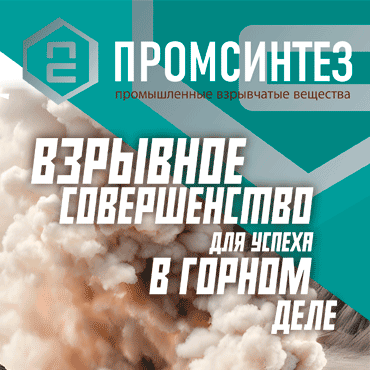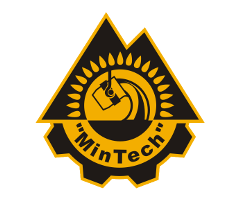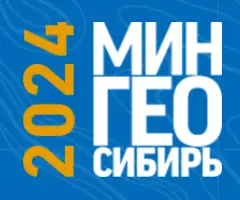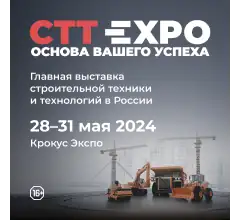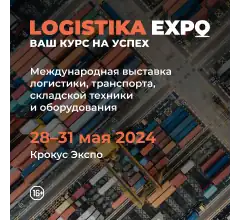Advancement of the SIGMA GT CAE system for numerical modeling of the stress-and-strain states
![]() S.V. Dmitriev , I.E. Semenova, A.A. Shestov
S.V. Dmitriev , I.E. Semenova, A.A. Shestov
Mining Institute Kola Science Centre of the Russian Academy of Sciences, Apatity, Russian Federation
Russian Mining Industry №5S / 2023 р. 135-141
Abstract: The paper presents the directions and results of developing the Sigma GT software suite designed for numerical modeling of the stress-and-strain state of a rock mass using the finite element method. It describes the process of computational module optimization to ensure the possibility of refined simulation in subareas of the original model. The process of storing coarse grid matrices is upgraded, which optimizes the use of computational resources when calculating the stress-and-strain state of large-scale models. The trial-and-error procedure has been improved up to the system of hierarchical interrelation of different scale models, which allows to actualize the boundary conditions of individual block models when modifying the field model configuration. An extensible library of local models is presented, which makes it possible to quickly generate models of mining system elements with adequate boundary conditions. The expandable functionality of the software product is demonstrated, which allows to accelerate the process of finite element model creation. This tool allows the software user to generate local models of various configurations, minimizing time consumption and possible errors in preparation of the finite element mesh. Application and functionality of tools for post-processing of modeling results, both in 2D and 3D form, are described. Export of stress isolines allows saving the calculation data in the format used at the mining enterprise and combining them with the maps of mine working. 3D visualization of the calculated data contributes to a comprehensive assessment of the stress-and-strain state vector field and identification of the areas with critical stress and strain concentrations under a certain mining development option.
Keywords: stress-and-strain state, finite element method, numerical simulation, 3D visualization, multigrid method
For citation: Dmitriev S.V., Semenova I.E., Shestov A.A. Advancement of the SIGMA GT CAE system for numerical modeling of the stress-and-strain states. Russian Mining Industry. 2023;(5S):135–141. https://doi.org/10.30686/1609-9192-2023-5S-135-141
Article info
Received: 01.11.2023
Revised: 22.11.2023
Accepted: 28.11.2023
Information about the authors
Sergey V. Dmitriev – Research Associate, Mining Institute Kola Science Centre of the Russian Academy of Sciences, Apatity, Russian Federation; e-mail: This email address is being protected from spambots. You need JavaScript enabled to view it.
Inna E. Semenova – Cand. Sci. (Eng.), Head of Geomechanics Department, Mining Institute Kola Science Centre of the Russian Academy of Sciences, Apatity, Russian Federation; e-mail: This email address is being protected from spambots. You need JavaScript enabled to view it.
Andrey A. Shestov – Principal Software Engineer, Mining Institute Kola Science Centre of the Russian Academy of Sciences, Apatity, Russian Federation; e-mail: This email address is being protected from spambots. You need JavaScript enabled to view it.
References
1. Kozyrev A.A., Semenova I.E., Shestov A.A., Vettegren V.I., Kuksenko B.C., Tomilin N.G., Kryuchkov M.A. 3D modeling of the geomechanical state of the rock mass as a basis for predicting the rock-bump hazard hazard in underground mines of the Apatite JSC. In: Geodynamics and the stressed state of the Earth's subsoil: a collection of scientific papers: Proceedings of a Scientific Conference with participation of foreign researchers, Novosibirsk, 2–5 Octiber 2007. Novosibirsk: Siberian Branch of the Russian Academy of Sciences; 2008, pp. 272–278. (In Russ.)
2. Semenova I. E. Geomechanical aspects of development of closely spaced ore deposits under conditions of rockburst hazard. Gornyi Zhurnal. 2020;(9):26–32. (In Russ.) https://doi.org/10.17580/gzh.2020.09.03
3. Dmitriev S.V. Choise the optimal contact element modification for stressed-strain state modeling of the rock massif with heterogeneity accounting. Sever i Rynok: Formirovanie Ekonomicheskogo Poryadka. 2019;(1):143–152. (In Russ.) https://doi.org/10.25702/KSC.2220-802X.1.2019.63.143-153
4. Semenova I.E., Dmitriev S.V., Shestov A.A. 3D finite element-based modeling of discontinuities. Gornyi Zhurnal. 2020;(12):35–39. (In Russ.) https://doi.org/10.17580/gzh.2020.12.07
5. Shahverdiloo M.R., Zare S. Studying the normal stress influential factor on rock joint stiffness using CNL direct shear test. Arabian Journal of Geosciences. 2021;14(20):2082. https://doi.org/10.1007/s12517-021-08449-6
6. Bueler E. PETSc for partial differential equations: Numerical solutions in C and python. Philadelphia: SIAM Press; 2021. 391 p. https://doi.org/10.1137/1.9781611976311
7. Dalcin L., Paz R., Kler P., Cosimo A. (). Parallel distributed computing using Python. Advances in Water Resources. 2011;34(9):1124– 1139. https://doi.org/10.1016/j.advwatres.2011.04.013
8. Slavov B., Polovnikov K., Nechaev S., Pospelov N. Largest eigenvalue statistics of sparse random adjacency matrices. June 12, 2023. arXiv:2305.13465v2. Available at: https://arxiv.org/pdf/2305.13465.pdf
9. Brown J., Smith B., Ahmadia A. Achieving textbook multigrid efficiency for hydrostatic ice sheet flow. SIAM Journal on Scientific Computing. 2013;35(2):359–375. https://doi.org/10.1137/110834512
10. Begum N., Ouazzi A., Turek S. Efficient Newton-multigrid FEM solver for multifield nonlinear coupled problems applied to thixoviscoplastic flows. Proceedings in Applied Mathematics and Mechanics. 6 July 2023. No. 665. https://doi.org/10.17877/DE290R-23836
11. Munch P., Heister T., Prieto Saavedra L., Kronbichler M. Efficient distributed matrix-free multigrid methods on locally refined meshes for FEM computations. ACM Transactions on Parallel Computing. 2023;10(1):3. https://doi.org/10.1145/3580314
12. Kozyrev A.A., Lukichev S.V., Nagovitsin O.V., Semenova I.E. Geomechanial and technological modeling as a means for improving safety of hard mineral deposits development. Mining Informational and Analytical Bulletin. 2015;(4):73–83. (In Russ.) Available at: https://giab-online.ru/files/Data/2015/04/11._73-83_Kozirev.pdf
13. Zhang H., Tian Y., Zhao P. Dispersion curve interpolation based on kriging method. Applied Sciences. 2023;13(4):2557. https://doi.org/10.3390/app13042557
14. Dmitriev S.V. Finite element method-based solution of elastic problem. stress tensor visualization. Mining Informational and Analytical Bulletin. 2017;(7):222–227. (In Russ.) https://doi.org/10.25018/0236-1493-2017-7-0-222-227
15. Kovalevskiy O., Charara M., Cancelliere M. External control of ParaView visualization. In: GraphiCon 2022: 32nd International Conference on Computer Graphics and Vision, September 19–22, 2022. Ryazan: Ryazan State Radio Engineering University named after V.F. Utkin; 2022, pp. 1137–1146. https://doi.org/10.20948/graphicon-2022-1137-1146



